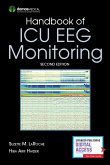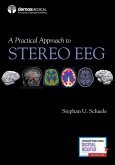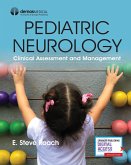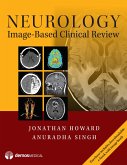"This book is an excellent reference for trainees and experienced monitoring technologists as well as physicians, anesthesia professionals, and neurophysiologists. It provides in-depth coverage of every aspect of monitoring in three easy-to-read and -comprehend sections... Overall, this is a valuable reference for any person in the field of IOM, from trainees to experienced people. There is so much data in this book that one could easily learn something new from it just by opening the book. It is an essential reference for any institution offering IOM services." --Donna Jacobs, R. EEG T., CNIM, The Neurodiagnostic Journal "The second edition of A Practical Approach to Neurophysiologic Intraoperative Monitoring can function as both an educational manual and a day-to-day guide to the myriad situations encountered in NIOM. The volume is accessible at all levels of skill and training, serving as both an entry point for new practitioners and a reference manual for experienced ones, making this an essential book for the NIOM library." --Jessica Nance, Department of Neurology, Johns Hopkins Hospital, Journal of Pediatric Epilepsy "Because of its direct clinical applications, this is a good purchase for any neurological and neurosurgical library." -- Doody's Reviews "I would certainly recommend [this book] to any technologist who monitors in the operating room." -- American Journal of Electroneurodiagnostic Technology This is a fundamental resource for physicians, technologists, and other health professionals who need to acquire state-of-the-art skills in neurophysiologic intraoperative monitoring (NIOM). It covers basic aspects of monitoring, describes the clinical and technical requirements for monitoring specific types of surgeries, and addresses the administrative aspects of running an NIOM service. The second edition has been updated to incorporate the vast amount of new information and techniques that have evolved since the publication of the first edition. This includes expanded coverage of each of the modalities used in monitoring (SEP, MEP, BAEP, EEG, and EMG) which are now discussed in individual chapters, training curriculum for neurophysiologists and technologists, policies and procedures for NIOM labs, and accreditation and certification. New applications and clinical innovations are interwoven throughout, and there is a completely new chapter on the use of NIOM in movement disorders surgery. Of value to practitioners at any level of experience, the book is now divided into three sections. The first section, Basic Principles, introduces the reader to the operating room environment, anesthetic considerations, and the various monitoring modalities. The second section, Clinical Methods, reviews the use of NIOM in specific types of surgeries. Many of these chapters are co-written by a neurophysiologist and technologist and present an overview of the particular surgery, relevant anatomy, monitoring modalities, data interpretation, warning criteria and technical considerations. A unique third section, Administrative Issues, has been added to this edition to address technical aspects of NIOM machines, remote monitoring, billing, ethical and legal issues, and training requirements for physicians and technologists. The final two chapters are devoted to setting up and maintaining an NIOM service and include sample policies and procedures. Key Features: * Provides a wealth of current information on NIOM for day-to-day case management * Covers all modalities and practical applications of NIOM for specific surgeries * Contains detailed information on training, setup, billing, equipment, lab protocols, and running a service * Appeals to NIOM providers at every level * Combines the perspectives of physicians and technologists who together author surgical chapters
Bitte wählen Sie Ihr Anliegen aus.
Rechnungen
Retourenschein anfordern
Bestellstatus
Storno







